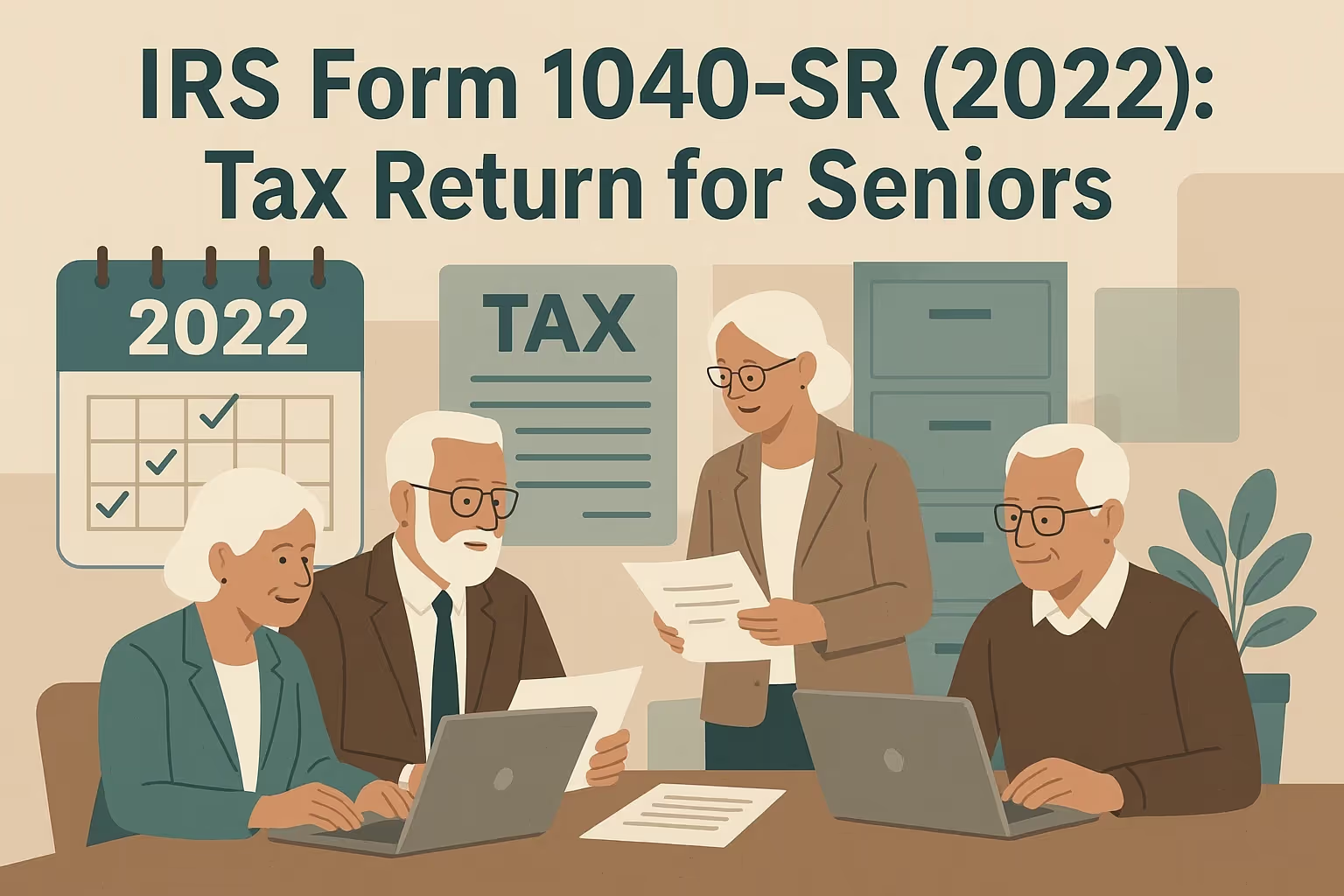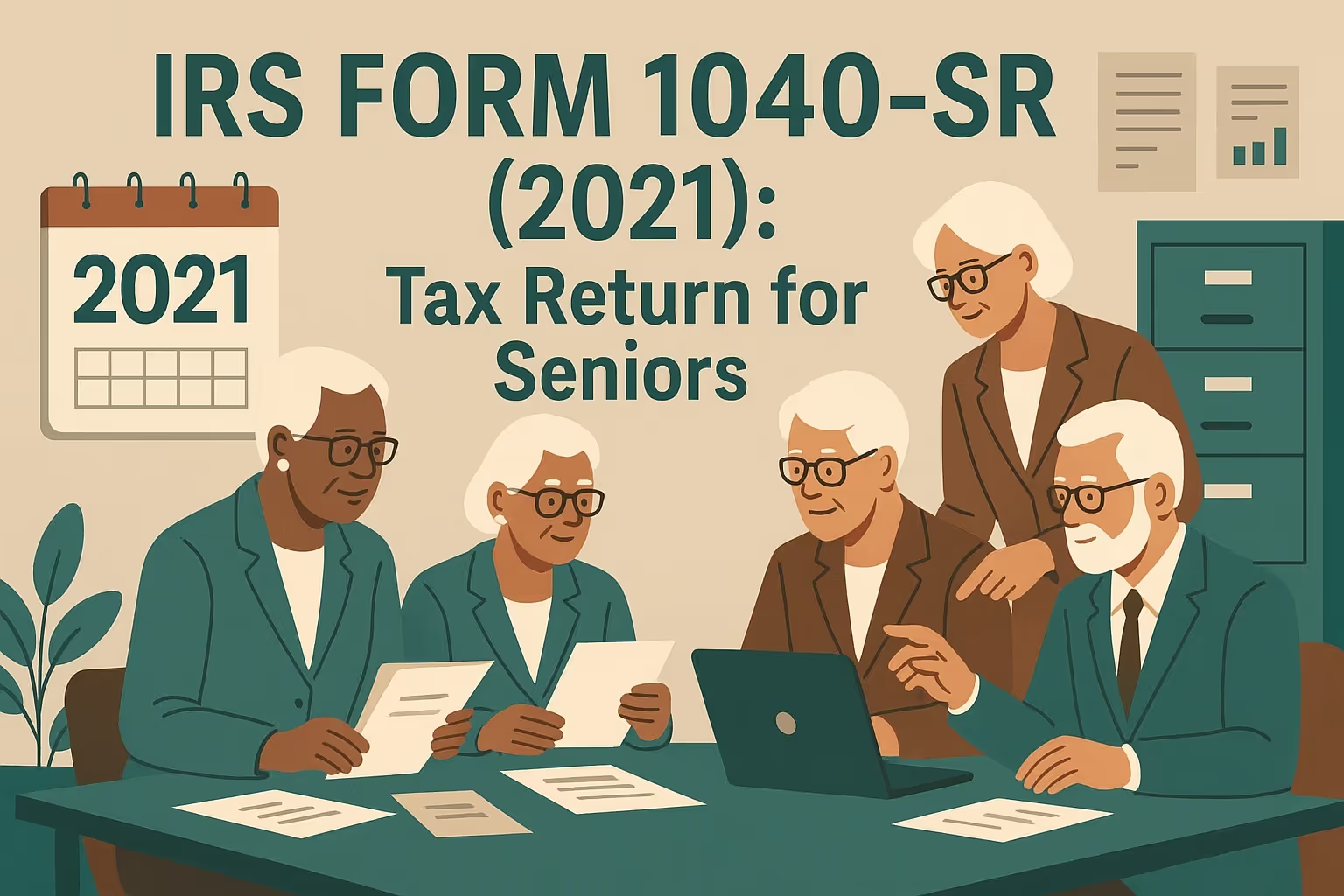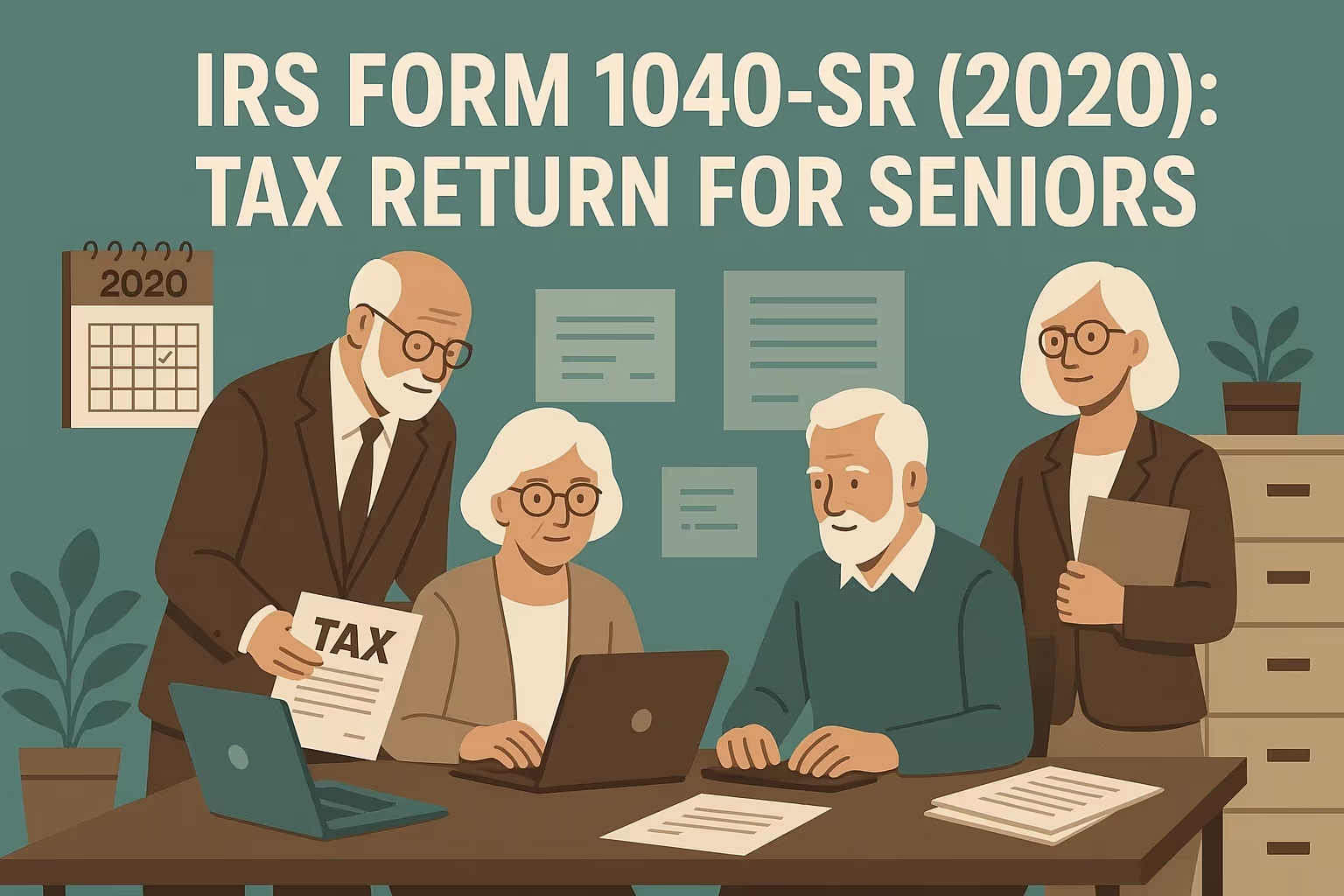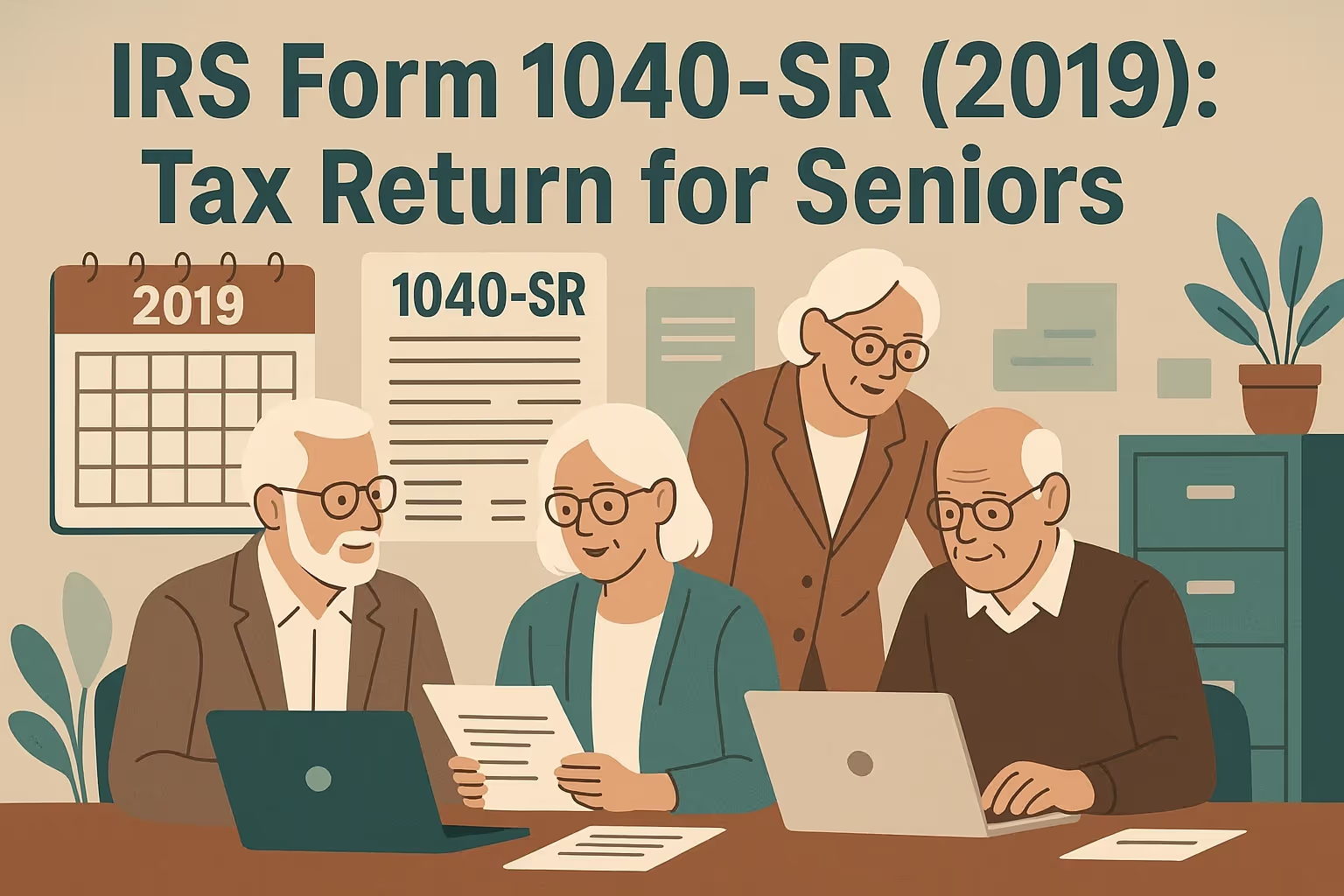Form 1040SR 2014 Instructions: Essential Tax Filing Guide
Filing federal income tax can be overwhelming, especially for seniors with multiple income sources, new filing requirements, or age-based tax benefits. For the 2014 tax year, older taxpayers were still using the standard federal forms—Form 1040, Form 1040A, and Form 1040EZ—because Form 1040-SR had not yet been introduced. Despite this, the Internal Revenue Service provided important instructions for seniors, ensuring they could take advantage of available benefits while meeting their obligations.
In 2014, taxpayers 65 and older were eligible for higher standard deduction amounts, increased income thresholds before filing was required, and extraordinary medical expenses and credits provisions. Seniors also needed to understand how to report income from wages, pensions, Social Security, dividends, and other forms of investment income. For many households, these differences directly affected taxable income and final refund or payment outcomes. Knowing which tax form to file and how to apply these adjustments was key to accurate and timely tax filing.
This guide explains how seniors could file their 2014 tax return step by step, highlighting the most relevant instructions and benefits. It also provides context on common mistakes, required schedules, and payment options, helping seniors prepare a complete return. Whether filing jointly, as single filers, or under another filing status, seniors can use this resource to understand their responsibilities better and maximize available credits.
Understanding Form 1040 for Seniors in 2014
Seniors filing federal income tax for the 2014 tax year had three main tax form options. Each form served a different type of taxpayer, ranging from simple to more complex situations. Choosing the correct version was essential to ensure accurate reporting and compliance with Internal Revenue Service requirements.
Available Tax Forms in 2014
- Form 1040EZ: This form was designed for taxpayers with straightforward financial situations. It was available to those with taxable income under $100,000, no dependents, and limited types of income, such as wages or interest.
- Form 1040A: This form allowed taxpayers to report more income types than the 1040EZ, including dividends, pensions, and Social Security benefits. It also supported certain deductions and credits, including the child and income tax credit.
- Form 1040: This comprehensive form was required for taxpayers with complex financial circumstances, such as those who itemized deductions, reported investment income, or needed to file additional schedules for pensions, mortgage interest, or farm income.
Senior-Specific Benefits in 2014
- Seniors 65 and older received a higher standard deduction, reducing taxable income and often eliminating the need to itemize.
- Filing requirements included higher income thresholds, allowing seniors to earn more before filing a return.
- Medical expenses were deductible above 7.5% of adjusted gross income, compared to 10% for younger taxpayers.
- Seniors could qualify for the credit for the elderly or disabled, which provided direct tax relief for eligible taxpayers.
- Social Security benefits received more favorable taxation rules compared to other income types.
These provisions benefited seniors by reducing overall taxation and making filing more manageable. By understanding which form to file and which benefits apply, older taxpayers could better prepare their tax returns and avoid costly mistakes.
Key Tax Updates for 2014
The 2014 tax year included several changes that directly affected seniors. These updates influenced how taxpayers reported income, calculated deductions, and determined filing requirements. Staying informed about these adjustments helped seniors prepare accurate tax returns and avoid errors.
Standard Deduction Amounts for Seniors
- Single filers age 65 or older could claim a standard deduction of $7,750.
- Married taxpayers filing jointly received $14,800 if both spouses were 65 or older, or $13,600 if only one spouse met the age requirement.
- Heads of household age 65 or older could claim $10,650.
- Married taxpayers filing separately received $7,400 if at least one spouse was age 65 or older.
Filing Thresholds for Seniors
- A single filer age 65 or older needed to file only if income reached $11,700 or more.
- Married taxpayers, 65 and older, who were filing jointly needed to file at $22,700.
- Married taxpayers with one spouse age 65 or older needed to file at $21,500.
- Heads of household age 65 or older had to file if their income reached $14,600.
- A qualifying widow or widower age 65 or older had to file at $17,550.
Additional Updates from 2013
- The personal exemption amount increased to $3,950 per person.
- Tax bracket thresholds shifted slightly due to inflation.
- The Social Security wage base increased to $117,000.
- Contribution limits for traditional and Roth IRAs remained $5,500, with an additional $1,000 catch-up allowance for taxpayers age 50 or older.
- Higher-income households faced increased Medicare Part B and D premiums, deductible as medical expenses if itemized.
These changes demonstrated how federal taxes adjusted from year to year. Seniors who kept up with updates could better evaluate their filing requirements and maximize deductions and credits.
Step-by-Step Filing Instructions
Completing a tax return requires careful preparation and attention to detail. In 2014, seniors followed the same general filing process as younger taxpayers, but with adjustments for age-related benefits.
Step 1 – Gather Tax Documents.
Seniors needed to collect all required paperwork before preparing their return. This included:
- Form W-2 from employers
- Form 1099-R for pensions and retirement distributions
- Form SSA-1099 for Social Security benefits.
- Form 1099-INT and 1099-DIV for interest and dividends
- Records of medical expenses, charitable donations, and property taxes
- Previous years’ income tax returns for reference
Step 2 – Choose Filing Status.
Filing status determined deductions, tax rates, and eligibility for credits. Seniors could file as single filers, married taxpayers filing jointly or separately, head of household, or qualifying widow(er). Selecting the correct status was critical for accurate taxation.
Step 3 – Report Income
Seniors needed to report all income sources to the Internal Revenue Service. Each type of income requires correct placement on the tax form to calculate taxable income accurately.
- Seniors must report all wages earned from an employer, which are shown on Form W-2. This included both full-time and part-time work completed during the tax year.
- Pension and annuity distributions had to be reported using Form 1099-R. These payments were familiar sources of retirement income and were generally taxable.
- Social Security benefits were reported using Form SSA-1099. The taxable portion depended on total income and filing status, so proper calculation was necessary.
- Interest earned from savings accounts, certificates of deposit, or government bonds had to be reported. Taxpayers received Form 1099-INT from their financial institution.
- Dividends received from stocks, mutual funds, or other investments had to be reported using Form 1099-DIV. Both ordinary dividends and qualified dividends require correct entry.
- Investment income, such as capital gains or losses from the sale of property or securities, must be reported on Schedule D. Seniors must keep records of purchase prices and sales amounts.
- Farm income or self-employment income also had to be reported. Even modest earnings from side work or small farming operations counted as taxable income.
By carefully reporting each source of income, seniors ensured that their tax return was accurate, complete, and in compliance with Internal Revenue Service filing requirements. This also allowed them to qualify for deductions and credits, reducing their overall tax liability.
Step 4 – Calculate Adjusted Gross Income.
Seniors calculated adjusted gross income by subtracting eligible adjustments such as retirement contributions, health savings account deposits, or self-employment expenses.
Step 5 – Apply Standard Deduction or Itemize.
Taxpayers age 65 or older qualified for a higher standard deduction. Seniors with significant medical expenses, mortgage interest, or charitable donations could compare itemized deductions to determine which option lowers their taxable income more.
Step 6 – Determine Taxable Income and Tax Owed.
Taxable income was calculated by subtracting the standard deduction and exemptions from adjusted gross income. Seniors then applied the appropriate tax rates to calculate federal taxes owed.
Step 7 – Apply Credits.
Eligible seniors could further reduce their tax liability with credits such as the child tax credit, income tax credit, and credit for the elderly or disabled.
Step 8 – Compare Payments and Refunds.
Taxpayers compared their calculated tax to amounts already withheld or estimated tax payments. This determined whether additional dollars were owed or if they qualified for a refund.
Following this process step by step helped seniors prepare a complete and accurate tax return while taking advantage of age-specific provisions.
Filing Options for Seniors
In 2014, seniors could file income tax returns electronically or on paper. Each option offered unique advantages, and the decision often depended on personal preference, the complexity of the return, and access to resources.
Electronic Filing (E-File)
- Seniors with adjusted gross incomes of $60,000 or less could use IRS Free File, which provides free access to brand-name tax filing software.
- Free File Fillable Forms were another electronic option that allowed taxpayers to prepare forms online with built-in calculations but limited guidance.
- Commercial software and professional tax preparers offered additional features, including audit support and step-by-step instructions, to maximize refund accuracy.
- E-filing provided faster refunds, fewer errors, and immediate confirmation of receipt from the Internal Revenue Service.
Paper Filing
- Paper returns required careful completion using black or blue ink and a signature.
- Seniors' mailing returns needed to include all schedules and additional forms in proper sequence.
- Form W-2 copies and any Form 1099 with withheld taxes must be attached.
- Mailing addresses varied by state and whether payment was included with the return.
E-filing was typically preferred for most households because of speed, accuracy, and security. However, paper filing remained available for taxpayers who preferred traditional methods or could not access electronic resources. Seniors could choose the method that best matched their filing requirements and comfort level.
Payment Options and Deadlines
Seniors who owed federal taxes for the 2014 tax year had several ways to submit payments. Selecting the correct method helped ensure compliance with Internal Revenue Service requirements while avoiding unnecessary penalties.
Electronic Payment Methods
- The Electronic Federal Tax Payment System allowed seniors to pay directly from a bank account without additional charges.
- Electronic funds withdrawal was available when e-filing, authorizing a direct debit for the exact tax owed.
- Debit and credit card payments were processed through third-party providers, though service fees applied.
Traditional Payment Methods
- Paper filers often used checks or money orders made payable to the United States Treasury.
- Seniors mailing payments with their returns included Form 1040-V to identify the payment and ensure proper processing.
Deadlines and Penalties
- The deadline for payment was April 15, 2015, the same as the filing deadline.
- Payments must be made by April 15 to avoid penalties, even if a filing extension was requested.
- Failing to pay at least 90 percent of the total tax owed could result in an estimated tax penalty and interest on any unpaid balance.
By understanding these options and requirements, seniors could avoid late fees and manage their tax obligations effectively.
Required Schedules and Attachments
Depending on income sources and deductions, seniors must include additional schedules and forms with their tax returns. Attaching the correct documents ensured accurate processing and compliance.
- Schedule A was used for itemizing deductions such as medical expenses, mortgage interest, charitable contributions, and state or local taxes.
- Schedule B was required for reporting interest and dividend income greater than $1,500 or if the taxpayer had foreign accounts.
- Schedule D was necessary for reporting capital gains or losses on investments.
- Schedule R was used to claim the credit for the elderly or disabled if eligibility requirements were met.
- Additional forms, such as Form 8606, were included if nondeductible IRA contributions or Roth IRA conversions were made.
Attachments needed to be placed in the correct order, starting with Form 1040, followed by schedules in alphabetical order, and ending with information forms such as Form W-2 and 1099s. Including all required schedules helped seniors claim benefits such as deductions for mortgage interest and credits for eligible expenses, while ensuring their income was reported correctly.
Common Mistakes to Avoid
Errors in preparing income tax returns delay processing and reduce the accuracy of refunds. Seniors often faced specific challenges that were avoidable with careful review.
- Some taxpayers forgot to claim the additional standard deduction available for those age 65 or older.
- Incorrect filing status was a standard error, particularly for widows or widowers who continued to file jointly beyond the allowed period.
- Misreporting Social Security benefits was frequent, either by excluding them entirely or miscalculating the taxable portion.
- Seniors occasionally reported the complete pension distributions as taxable income without adjusting for after-tax contributions.
- Double-claiming deductions occurred when taxpayers attempted to use both itemized and standard deductions.
- Missing Social Security numbers, signatures, or supporting forms could delay processing and lead to rejected returns.
By reviewing each section carefully and confirming eligibility for deductions and credits, seniors could prepare a more accurate return and avoid unnecessary correspondence with the Internal Revenue Service.
Special Situations for Seniors
Not all seniors had the exact tax filing requirements. Some individuals had little or no taxable income, while others filed for the first time due to retirement or changes in household status. Recognizing these situations helped taxpayers determine when filing was required and when it might still be beneficial.
Zero-Activity or Dormant Year Filing
- Seniors with gross income below the required filing thresholds generally did not need to file a return.
- Taxpayers with self-employment income of $400 or more had to file regardless of other income.
- It could be worthwhile to file a claim for a refund of withheld taxes or credits, such as the income tax credit.
First-Time Senior Filers
- Retirement often triggered new filing requirements, including reporting Social Security benefits, pensions, and investment income.
- Widowed taxpayers needed to adjust their filing status, often moving from filing jointly to qualifying widow(er) or single filer.
- Seniors filing for the first time could seek assistance through free programs such as Volunteer Income Tax Assistance, Tax Counseling for the Elderly, or AARP Tax-Aide, all supported by the Internal Revenue Service.
These exceptional cases showed that while filing requirements varied, seniors could often benefit from filing a return even when it was not strictly necessary.
Frequently Asked Questions
What were the instructions for seniors on Form 1040SR 2014?
Form 1040-SR did not exist for the 2014 tax year, so seniors used Form 1040, 1040A, or 1040EZ. The Internal Revenue Service provided detailed instructions to help seniors prepare income tax returns, report income from wages, pensions, and investment income, and apply the higher standard deduction. Seniors could also use tax filing software or seek expert help to file accurately and maximize available credits.
How do income thresholds affect tax filing for seniors?
Income thresholds determined whether seniors had to file federal taxes in 2014. For example, single filers age 65 or older needed to file if their income reached $11,700 or more, while joint filers over 65 were required to file at $22,700. These thresholds reflected filing status and age, ensuring taxpayers with limited income did not need to complete unnecessary income tax returns.
Can seniors claim the child tax credit or the income tax credit?
Qualified seniors could claim credits such as the child or income tax credit if they met the income thresholds and filing requirements. These provisions reduced taxable income or directly lowered federal income tax owed. Seniors filing jointly, single filers, or married taxpayers must check eligibility carefully and include the correct schedules or additional forms when submitting their tax return to the Internal Revenue Service.
How are estimated tax payments and penalties handled for seniors?
Seniors who owed federal taxes but did not have enough withheld from wages, pensions, or investment income could make estimated tax payments during the tax year. If payments were less than 90 percent of the total owed, the Internal Revenue Service could apply an estimated tax penalty. Tax filing software or consulting a tax expert helped seniors calculate estimates and avoid unnecessary expenses.
What deductions and credits were most common for seniors in 2014?
Seniors often benefited from higher standard deductions based on age, deductions for mortgage interest, medical expenses, charitable contributions, and credits such as the credit for the elderly or disabled. Married taxpayers filing jointly and single filers could reduce taxable income and claim valuable tax benefits. Seniors who reported income from pensions or dividends often used schedules or other forms to claim deductions properly.
Where can seniors find help preparing a complete tax return?
Seniors could access expert help from professional tax experts, community programs, or reliable tax filing software. The IRS website also provided instructions, schedules, and forms for income tax returns. Seniors who wanted to file for a max refund or needed to prepare additional forms for farm income, dividends, or pensions could use software versions approved by the government or contact the Internal Revenue Service directly for guidance.


















